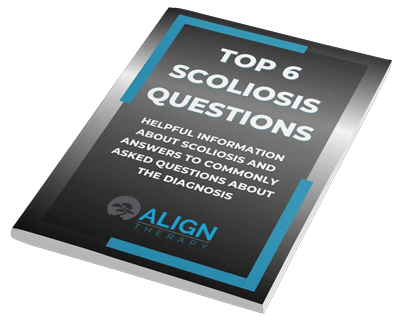Over the past 15 weeks I have had the opportunity of being immersed in physical therapy treatment for scoliosis. This post is not meant to teach you about scoliosis treatments themselves. It is to tell you a story about my first-hand introduction to scoliosis treatment and my honest thoughts and opinions about scoliosis treatment.
If you are interested in learning more about treatment itself, I would encourage you to watch this video, read on, and download the free booklet at the end of this post.
First Exposure to Scoliosis Treatment
So just to give you a quick background, I am a physical therapy student. I have completed my course work, and am now completing my first of three, 15-week long clinicals. Upon finding out the location of this clinical, I learned that it is a clinic that specializes in scoliosis treatment.
When hearing this, I began to panic! Why, you might ask? Because, throughout the entirety of my time in physical therapy school, we spent, maybe, a grand total of 15-20 minutes talking about scoliosis!
After a while though, being the irrationally confident and optimistic person that I tend to be, I began to think, “how hard could treating scoliosis really be?”
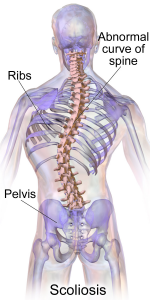
Well, let me tell you, that had to have been one of the most optimistically stupid thoughts to have ever crossed my mind!
When walking into the clinic on day one, I was feeling pretty good. I was ready to hit the ground running and start treating scoliosis left and right. I mean, scoliosis is a spinal deformity.
In school learned that the best exercises for back pain and spinal problems is core strengthening and postural correction! And just knowing that, I was ahead of the game . . . right?!
WRONG!!! As soon as I walked into the clinic, I see my clinical instructor (CI), Dave, standing behind a patient, doing . . . well . . . whatever this is:

After getting past the initial panic, I calmly gathered my senses, took a deep breath, and thought to myself “okay, that’s just one exercise I don’t know. It’s probably just some sort of stretch. Yeah, it’s gotta be a” but before I could finish that thought, he and the patient began doing this:
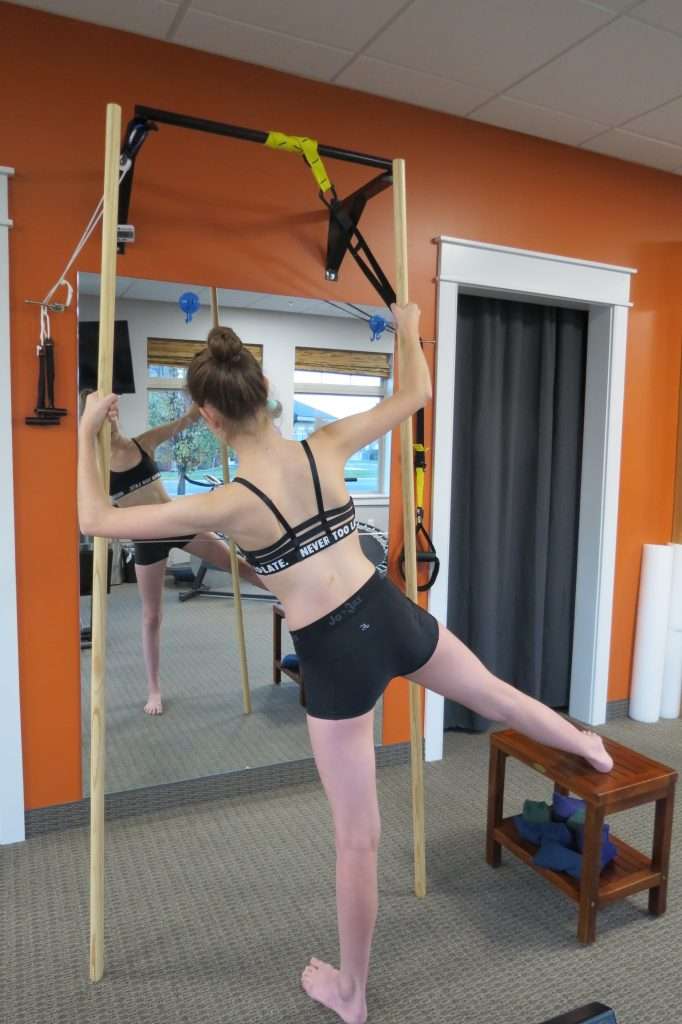
As my CI instructed the patient to do, well, at that point I really had no idea, all that was running through my brain was, “Wow! 2 years of PT school and I’m already 0 for 2! But it’s okay, I’m sure there’s not much more new, difficult, or frankly as weird than this.” Well, as I’m sure by this point you’ve guessed . . . I was dead wrong:
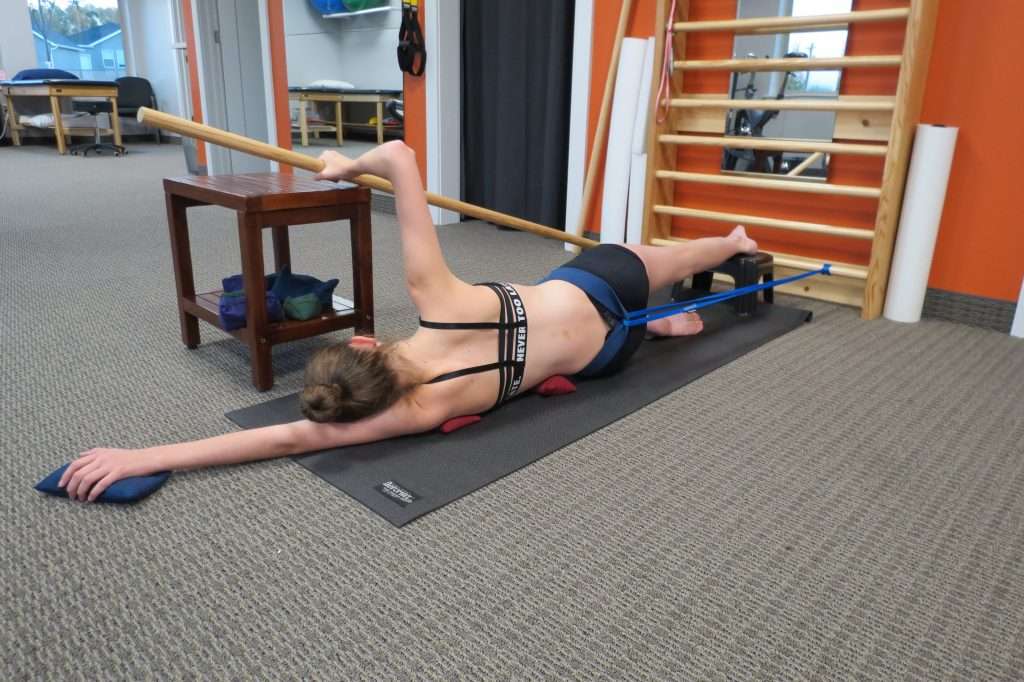
“What in the world is this, and better question; What in the world are they doing?!?” “What’s with the mirror? The bean bags? Those bars? Oh, and even more important, why is she strapped to those bars?!” At this point I was beginning to question if I was in the right place.
I mean, sure, I was told my CI’s name would be Dave, and he seems to have been expecting me. But then again, I had also been told I would be doing my clinical at a place called “Utah Physical Therapy”. I was in the “Align Therapy” building. (Dave had recently rebranded, and my school hadn’t gotten the name update). And these exercises are nothing like I had ever seen in my physical therapy books.
Who knows, maybe this so-called Dave guy saw me wander into his clinic, and decided he would play some sort of sick joke?! Needless to say, it wasn’t a sick joke, and I was in fact, in the right place.
3 Things Everyone with Scoliosis Should Know
Over the past 15 weeks I have been immersed in scoliosis treatment. I have observed, studied, and participated in these treatments to the point that when I close my eyes all I see are Schroth Stall Bars and pictures of curving spines. And while I would in absolutely no way say that I am a master of scoliosis treatment, over the past 15 weeks I feel that I have learned a lot.
I really wanted to share the above story because it really helps to illustrate a few key things that I have learned during my deep dive into scoliosis treatment. The following 3 points, are things that I truly and deeply wish that every person knew when diagnosed with scoliosis:
1.There is more that you can do than just “Wait-and-See”
The current standard of care for scoliosis treatment in North America is, well, not really treatment at all. It is a “wait-and-see” approach. Meaning, if your curve is not deemed large enough to be braced (usually about 25-30 degrees) then in many cases, you’re told to just wait 6 months, get another x-ray, and inevitably see that your curve has gotten larger. At that point, in many cases, you’re again told to just wait another 6 months before getting another x-ray.
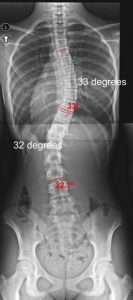
In a world where we no longer really wait for anything (2-day shipping from Amazon, mere minutes for food, and heaven forbid we see the buffer sign come up when streaming a video) why should a person wait 6 months doing NOTHING, with the potential of their scoliosis curve getting worse, just to be told to wait another 6 months!
If you or somebody you know is caught in this “wait-and-see” cycle, search for a therapist certified in treating scoliosis.
2. Not all physical therapist are equal when it comes to treating scoliosis
As I mentioned in my story above, I was not taught much about scoliosis treatment in school. While this may not be true of other schools, due to the small population of scoliosis patients, I feel it is likely that many other schools cover scoliosis in about the same amount of depth as mine.
This means that many therapists, when treating scoliosis, are likely to take the same approach I initially had, working primarily on core strengthening and trying to generally correct posture. While these treatments are definitely better than nothing, and a therapist should not be viewed negatively for attempting this kind of treatment, a better way exists.
The current standard of care for scoliosis treatment in Europe is doing scoliosis specific exercises (i.e. the Schroth Method, SEAS approach, etc.) as can be seen in the video and pictures above.
While it is not as common and widespread here in the United States, there are therapists across the country certified in treating scoliosis with these methods, and these methods work!
3. Scoliosis Specific Exercises Work!
Through reading countless research studies, writing a longer paper on scoliosis treatment than I would like to admit, and from seeing daily, first hand accounts of the success scoliosis specific exercises have had on our patients in the clinic, I can say without a doubt that IT WORKS!
The exercises may seem a little odd, weird, or just confusing at first (If they do to you, I’m right there in the same boat with ya!), stick with them, because they truly do work!

Over the past 15 weeks I have gotten to see the positive effects scoliosis specific exercises (specifically the Schroth Method) have had on the lives of so many people, and I can say that as a future father, as a family member, and as a friend, that if any of my loved ones are diagnosed with scoliosis, the first thing I will be doing is finding and taking them to a therapist certified in scoliosis specific exercise.
Just 15 weeks ago I had no idea scoliosis specific exercises existed, but now 15 weeks later, I am an advocate for them, and urge you to find a scoliosis certified therapist near you if you or a loved one has been diagnosed with scoliosis.
For more information about scoliosis and what we do at Align therapy download THIS booklet.
If you or a loved one has been diagnosed with scoliosis, sign up for a free consultation HERE.



